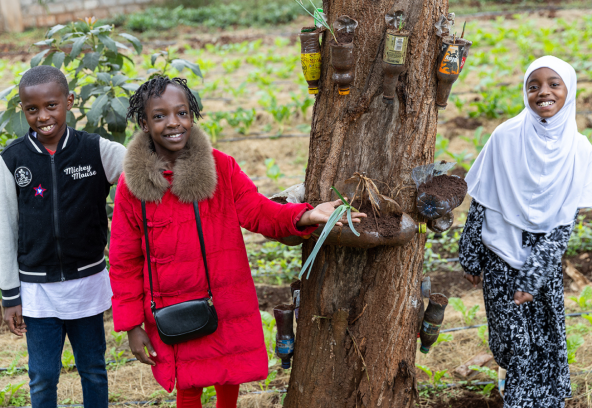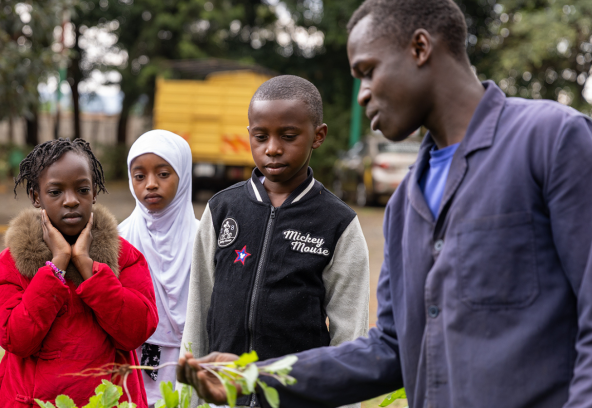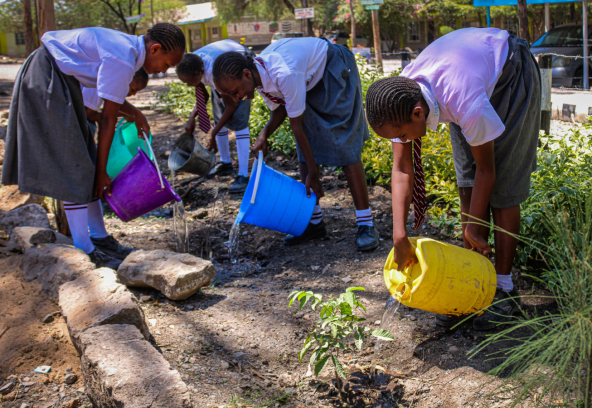Young Climate Leaders at Kwa Njenga Primary: Fighting Hunger Through Sustainable Farming

At Kwa Njenga Primary School in Nairobi, Kenya, three Grade 5 pupils—Ibdisana, Brafaan, and Sibel—noticed a painful reality: many of their classmates were going hungry every day because they couldn’t afford the KES 5 lunch fee.
This daily struggle had far-reaching effects. Students were distracted in class, attendance was inconsistent, and overall learning outcomes were dropping. Hunger was not just a health issue; it was an educational and social justice issue.
The Bold Idea: A School Farm for Food Security
Instead of accepting the situation, these young changemakers decided to act. Together with their teacher, they came up with a simple but powerful solution: transform unused school land into a farm.
By planting vegetables and other crops, they created a sustainable feeding program that could supplement meals for hungry students. What started as a small initiative quickly grew into a model of how climate-smart agriculture can support education while tackling food insecurity.
The Climate Connection
The farm is more than just a source of food—it is a living classroom. Students are learning hands-on skills in:
- Climate-smart agriculture techniques such as composting, water conservation, and organic farming.
- The role of sustainable food systems in fighting hunger and climate change.
- How small, local actions contribute to bigger climate resilience goals in Kenya.
By linking climate education with practical farming, the project empowers students to see themselves as active problem-solvers in the climate crisis.
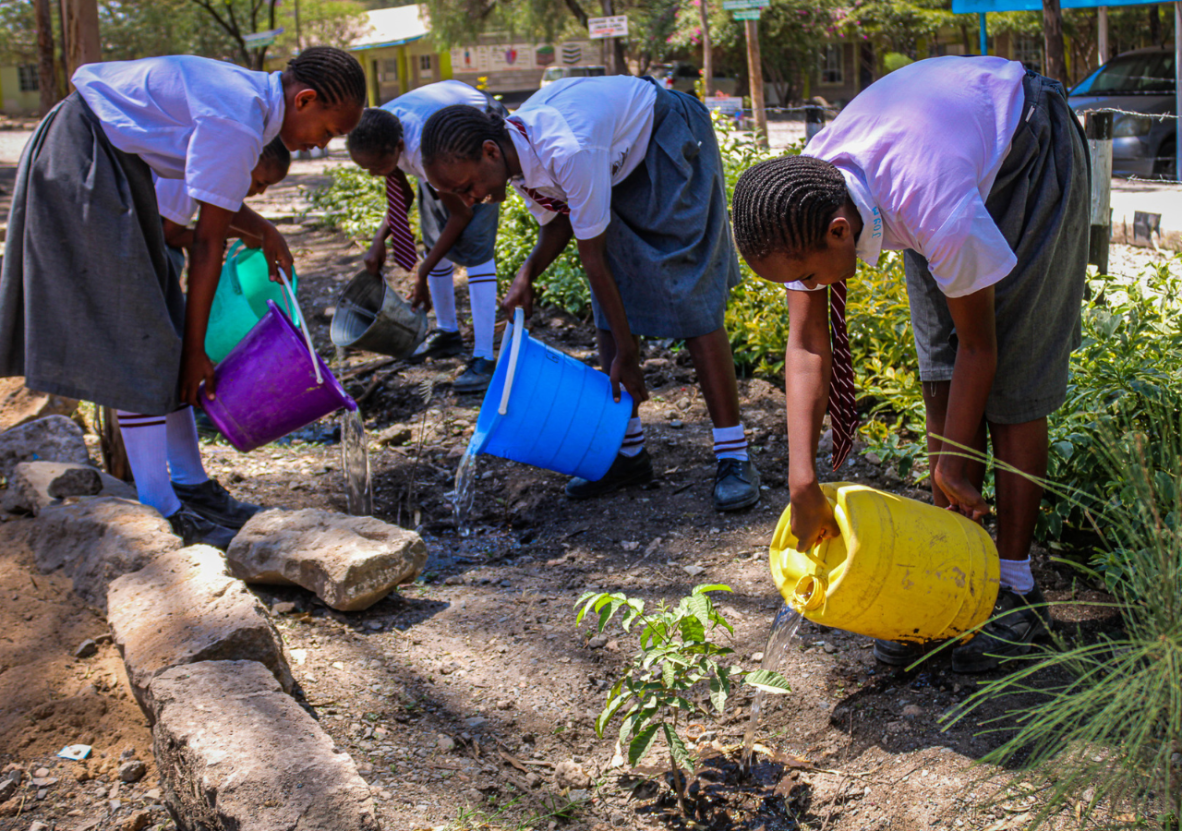
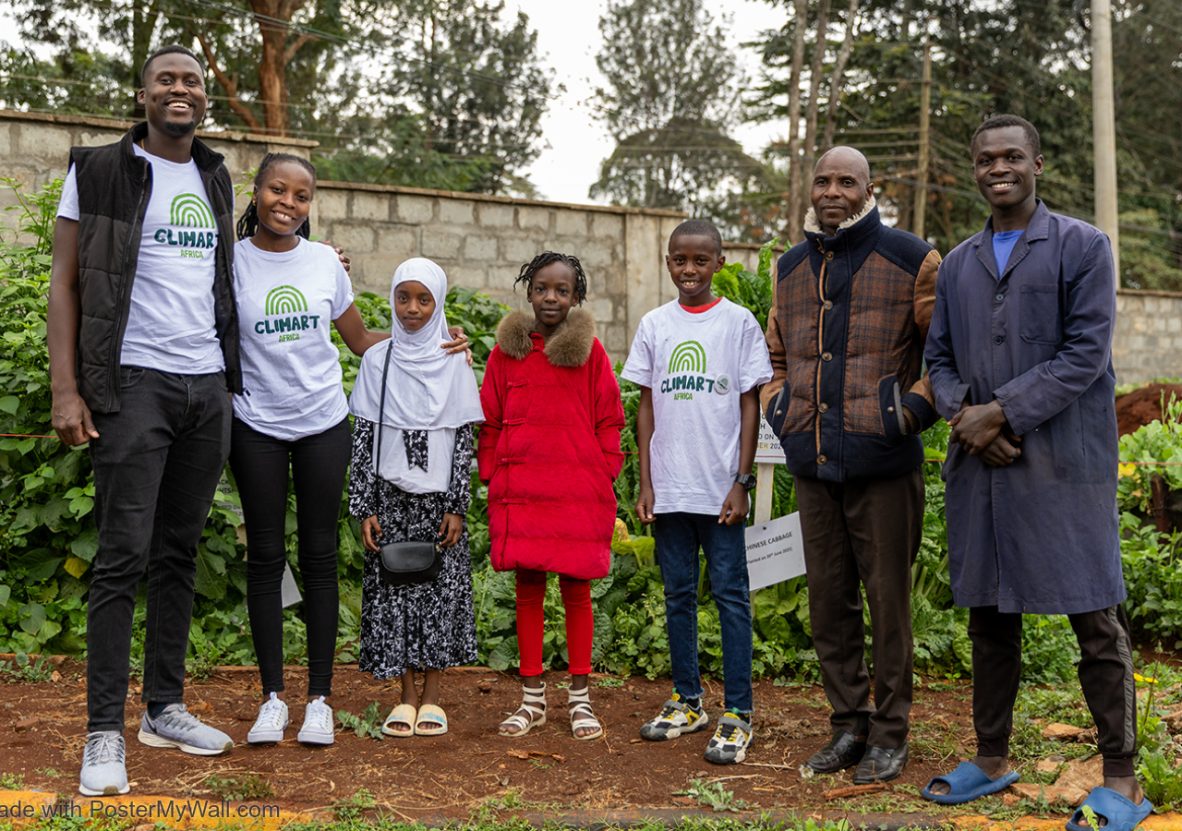
The Climate Connection
The farm is more than just a source of food—it is a living classroom. Students are learning hands-on skills in:
- Climate-smart agriculture techniques such as composting, water conservation, and organic farming.
- The role of sustainable food systems in fighting hunger and climate change.
- How small, local actions contribute to bigger climate resilience goals in Kenya.
By linking climate education with practical farming, the project empowers students to see themselves as active problem-solvers in the climate crisis.
The Vision for the Future
Ibdisana, Brafaan, and Sibel are not stopping here. Their long-term vision is to:
- Expand the school farm to produce surplus crops.
- Use the surplus to strengthen the school feeding program.
- Sell part of the harvest to generate income, helping fund their educational needs and sustain the project.
By combining compassion with innovation, these pupils are proving that climate action can solve real community challenges—from hunger to poverty to environmental degradation.
Why This Story Matters
This initiative shows how youth-led climate action in African schools can tackle multiple challenges at once:
- Hunger and malnutrition among schoolchildren.
- Poor learning outcomes caused by food insecurity.
- Lack of climate education in classrooms.
- Limited community resilience to the climate crisis.
At Climart Africa, we are proud to support and amplify such projects, because they embody our mission: Empower. Equip. Connect.




